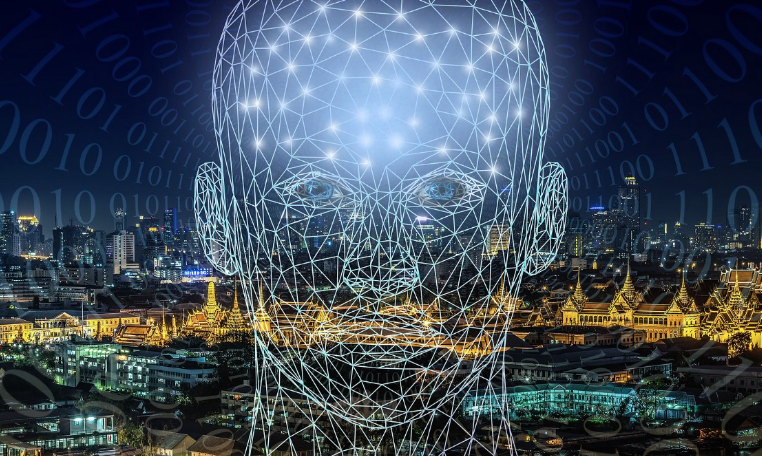“ChatGPT: Unlocking the Singularity, One Conversation at a Time!”
Introduction
ChatGPT is a natural language processing technology created by OpenAI, a research lab dedicated to advancing artificial intelligence. It is based on the concept of Generative Pre-Training (GPT), which uses a deep learning method to generate text from a given prompt. The technology has the potential to revolutionize the way humans interact with machines, and to open up many new opportunities for the development of artificial intelligence. One of the most exciting possibilities for ChatGPT is the Singularity Scenario, where it is used to create a powerful artificial intelligence that surpasses human intelligence. This could lead to a world where machines become increasingly capable of taking on complex tasks, such as driving cars, performing surgery, and making decisions on behalf of humans. ChatGPT could also be used to create intelligent personal assistants that can answer questions, make recommendations, and even provide companionship. By leveraging the power of GPT, ChatGPT could become an essential component of the Singularity Scenario and open up a world of possibilities for artificial intelligence.
ChatGPT: Exploring the Possibilities of AI-driven Conversation
AI-driven conversations are quickly becoming an important part of human-computer interaction. This new technology, called ChatGPT, has the potential to revolutionize how we communicate with computers. ChatGPT is a natural language processing (NLP) system that uses a recurrent neural network (RNN) to generate human-like conversations. This technology is based on the Transformer architecture, which is an advanced form of machine learning.
ChatGPT is a powerful tool for creating conversations between humans and computers. It has the ability to understand natural language and generate responses in a conversational manner. The system is trained on large datasets of conversations and can generate responses based on context and content. In addition, it can also learn from its interactions and improve its performance over time.
ChatGPT has many potential applications. For example, it can be used in customer service applications to provide quick and accurate answers to customer queries. It can also be used in chatbots to provide customer support, and to provide natural language understanding to applications such as virtual assistants.
ChatGPT also has the potential to improve the user experience of many applications. It can provide natural language understanding and generate conversations that are more engaging and relevant. This could lead to improved user engagement, as users will be able to interact with the application in a more natural way. In addition, ChatGPT can be used in applications that require natural language understanding, such as virtual assistants, voice-activated systems, and natural language search engines.
In conclusion, ChatGPT is a powerful tool for creating conversations between humans and computers. It has the potential to revolutionize how we communicate with computers, and to improve the user experience of many applications. As the technology continues to improve, ChatGPT will become an increasingly important part of human-computer interaction.
Is ChatGPT the Key to Unlocking the Singularity Scenario?
The concept of the Singularity scenario, in which machines become self-aware and surpass human intelligence, is an intriguing and potentially far-reaching one. The idea of a technological revolution that could bring about a radical transformation of the world has been explored in science fiction for decades, but is now being seriously discussed by many leading scientists and technologists. While there is still much debate as to whether or not such a scenario is possible, or even desirable, one of the most promising technologies that could play a role in its eventual realization is ChatGPT, a natural language processing system developed by OpenAI.
ChatGPT is a groundbreaking natural language processing system that is capable of generating human-like conversation in an accurate and context-sensitive manner. This technology is based on the Transformer model architecture and GPT-2, or Generative Pre-trained Transformer 2, a large language model that was first released in February 2019. GPT-2 is a state-of-the-art system that uses machine learning techniques to generate text that is both coherent and consistent. ChatGPT was developed by OpenAI as a way to improve upon GPT-2’s capabilities and make it more useful for real-world applications.
ChatGPT is a powerful tool that could potentially be used to create artificially intelligent agents that could interact with humans in a natural and meaningful way. This could be used to create virtual agents that could provide personalized customer service and assist with tasks such as scheduling appointments, answering questions, and providing advice. In addition, the system could be used to create more sophisticated conversational AI systems that could be used for tasks such as medical diagnosis, legal advice, and financial planning.
In terms of the Singularity scenario, ChatGPT could be used to create AI agents that could think and reason for themselves. This could potentially lead to machines that could surpass human intelligence and usher in a new era of artificial superintelligence. However, this is still a distant dream and there is still a great deal of research and development that needs to be done before this technology can be used to achieve such a goal.
In conclusion, ChatGPT is a powerful natural language processing system that could potentially play an important role in the realization of the Singularity scenario. While this technology is still in its early days, it shows great promise and will likely continue to be developed in the future. As such, it is a key technology that could potentially unlock the Singularity scenario and lead to a radical transformation of our world.
ChatGPT: What Could a Human-AI Conversation Look Like?
A human-AI conversation could involve a human interacting with an artificial intelligence system to communicate and seek answers to questions or requests. The AI system would be able to interpret the language of the human and respond accordingly. This could include a range of scenarios, such as providing answers to questions, carrying out tasks, and providing advice.
The AI system would be designed to interact with the human in a manner that is natural and comfortable. This could involve the AI system responding with appropriate language and intonation, as well as providing meaningful responses to the human’s questions. The AI system would also be able to learn from the conversation, and be able to provide more accurate responses as the conversation progresses.
One potential application of a human-AI conversation could be in the area of customer service. A customer could easily interact with an AI system to provide answers to their questions or requests. This could be done via a chatbot or other form of AI, which would be able to understand and respond to the customer’s language and requests. This could potentially save time and provide a more efficient service for the customer.
Overall, a human-AI conversation could involve a range of scenarios and applications. This could involve providing answers to questions, carrying out tasks, providing advice, and even providing customer service. Through the use of natural language processing and machine learning, an AI system could be designed to communicate with humans in a manner that is natural and comfortable.
What Could ChatGPT Mean for the Future of Human-AI Interaction?
ChatGPT is an exciting development in the field of human-AI interaction, as it has the potential to revolutionize how humans interact with AI. By using a natural language processing (NLP) model, ChatGPT can understand and respond to human input in a conversation. This technology can be used to create more natural and intuitive conversations with AI agents, helping to bridge the gap between humans and AI.
ChatGPT can also be used to create more sophisticated AI agents that use natural language processing to understand and respond to humans in a more human-like manner. This could lead to more efficient, effective, and accurate interactions between humans and AI, as the AI agents become better at understanding the nuances of human language. In addition, ChatGPT could be used to build AI agents that can engage in more elaborate conversations with humans, allowing for more meaningful interactions.
Finally, ChatGPT could be used to create AI agents that are better able to recognize and respond to emotions. By understanding the emotional context of conversations, AI agents can better respond to humans. This could lead to more personalized and engaging conversations, helping to create a more natural and human-like interaction between humans and AI.
In conclusion, ChatGPT holds immense potential for the future of human-AI interaction. By allowing for more natural and intuitive conversations, AI agents can better understand and respond to human input in a more human-like manner. In addition, ChatGPT could be used to create AI agents that are better able to recognize and respond to emotions, leading to more personalized and meaningful interactions between humans and AI. If properly implemented, ChatGPT could help to bridge the gap between humans and AI, creating a more natural and engaging experience for both parties.
ChatGPT and the Singularity Scenario: What We Know So Far
In recent years, advances in artificial intelligence (AI) technology have raised questions about the implications of such technology for the future of humanity. One particular area of AI research that has garnered particular attention is the development of chatbots, which are computer programs designed to simulate conversation with a human user. One of the most advanced examples of a chatbot is ChatGPT, a generative pre-trained transformer (GPT) system developed by OpenAI that is capable of engaging in conversations with humans on a wide range of topics.
In addition to its potential as a conversational tool, ChatGPT has also been seen as a potential agent of change in what has come to be known as the Singularity Scenario. This scenario refers to the idea that, at some point in the near future, artificial intelligence will become so advanced that it will be capable of self-improvement, creating a technological singularity in which humanity will effectively become obsolete.
At the moment, however, it is important to remember that ChatGPT is still in its early stages and its capabilities are far from achieving the level of sophistication necessary for such a scenario to occur. While ChatGPT is capable of engaging in increasingly complex conversations, it is still limited in its ability to understand and interact with the world around it. In addition, AI technology is still in its infancy and much research and development is needed before it is capable of achieving the level of autonomy necessary for the Singularity Scenario to become a reality.
Therefore, while ChatGPT and the Singularity Scenario are both fascinating areas of AI research, it is important to remember that much work still needs to be done before either one can be fully realized. For the time being, it is best to remain cautiously optimistic about such possibilities, while also keeping in mind the potential risks that come with such technological advancements.
Conclusion
The ChatGPT chatbot provides an interesting platform for exploring the implications of the Singularity Scenario. It allows users to interact with a simulated AI, and to explore the potential outcomes when humans and machines come into closer contact. Although the chatbot is still in its early stages, it provides an interesting glimpse into the potential of AI and its impact on the future of humanity. Ultimately, the Singularity Scenario is still far from being realized, and the implications of its eventual arrival still remain uncertain.


